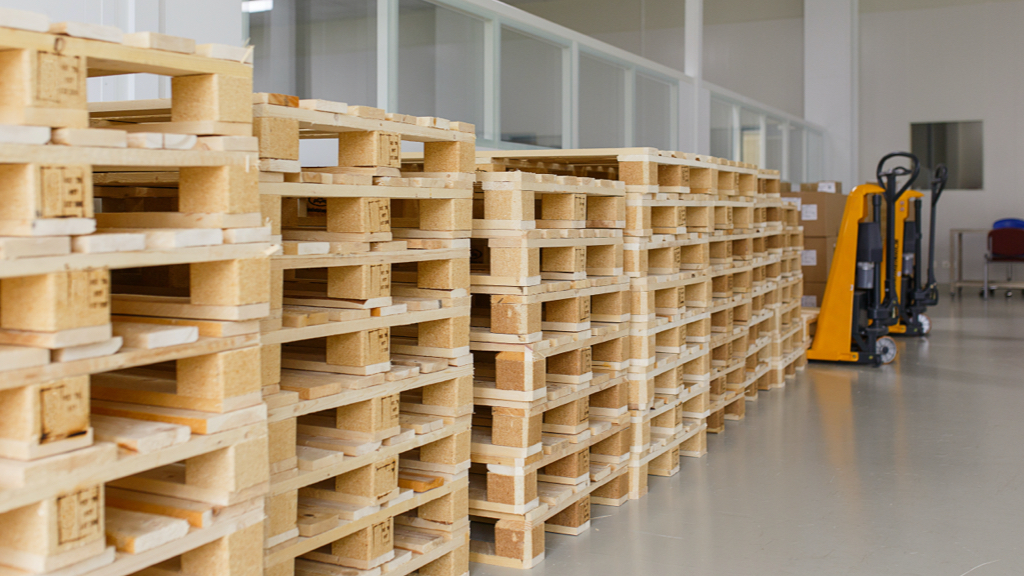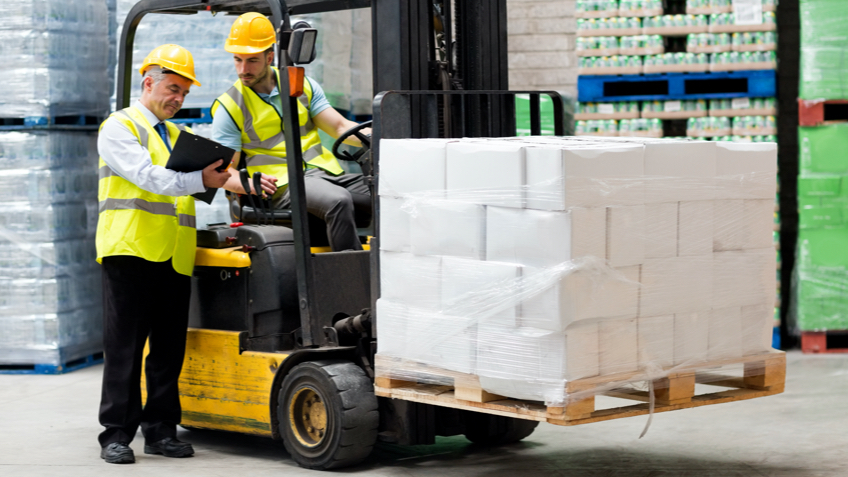The life and times of a pallet
Posted 21st April, 2021
Despite being manufactured from wood, the traditional pallet remains one of the most environmentally friendly methods of shipping goods. To better understand the ecological impact of pallets, we take a closer look at the lifecycle of one of the most important items in today’s world.
There are currently estimated to be over 10 million wooden pallets in use worldwide. Without them, the worldwide supply chain would grind to a halt, along with the economy. Our supermarkets would be left without food on the shelves, and both consumers and businesses would be left without essential supplies. Quite simply, it is pallets that make the modern marketplace function. In a logistical sense, they are almost as valuable as currency itself. So just what does their lifecycle look like? Let’s step back to the very beginning.
1. From seedling to sapling
Wooden pallets begin their life as trees. Luckily, these are seeded in carefully managed, purpose planted timber forests that are fully sustainable and are continuously replanted. There are strict rules around growing and harvesting timber and all pallet manufacturers are expected to source their materials from certified producers.
Both soft and hardwood are used in pallet construction. Softwood pallets may be made from a variety of woods including pine, spruce, and cedar, while hardwood pallets generally use oak, maple, and beech.
Pine is one of the most popular woods for pallets, as it is relatively fast-growing, easy to process and once treated, hygienically suitable for shipping goods such as foods and medical products.
2. Reaching maturity
It takes several years for seeds to sprout and grow from saplings into trees. Most commercial forestry is planted in stages so that different crops are ready for harvest at different times, ensuring that complete deforestation does not occur.
Trees are only used for lumber once they have reached maturity. Softwoods are more common for pallets as they grow relatively quickly and are more likely to be produced in tree farms, while hardwoods are usually logged from older, already-existing forests.
3. Logging and milling
Once the mature trees have reached the right size, they are logged and transported to sawmills. In recent years, more and more attention has been focussed on improving sustainability within the logging process too, with newer, fuel-efficient and less polluting vehicles playing a major role in reducing the environmental footprint of the industry.
Once harvested, the wood is sent to mills, where it is transformed from logs into timber, the raw material for constructing pallets. Different pallets will use different ratios of hard and softwood, although pine is by far the most commonly used material.
4. Pallet construction
The prepared timber is transported from the mill to specialist pallet manufacturers to be used in the construction of pallets. Different types of pallet may be built depending on the intended use.
Although most pallets in the UK are manufactured to UK or Euro pallet specifications, the length, width, height, weight, board thickness and more can be fully altered to meet certain design and performance requirements.
5. Pallet distribution
Once a pallet is constructed, it may be either sold directly to customers or sold to a distributor. Some companies sell their pallets outright, while others lease them out in rental programs know as pallet pools.
6. Service life
Once in circulation, pallets are used to move goods around the country and globe. Pallets play a vital role in speeding up the manufacturing and distribution process, as they are far more stable methods for transporting cargo than alternatives such as wooden boxes or barrels.
Pallets see use in almost every sector, from pharmaceutical manufacturing, energy generation, consumer goods and automobile manufacturing, to the distribution of produce and agriculture. Of course, they also support our huge demand for e-commerce. That last order you received from Amazon almost certainly spent a significant part of its journey on a pallet!
7. Repair, recycling and repurposing: extending the life of a Pallet
Given how extensively they are used, pallets inevitably become damaged during their lifespan. Damaged pallets can usually be repaired multiple times, extending their lifespan and helping to contribute to their overall sustainability. Pallets that are too damaged to be fixed have a rich afterlife too.
Many are deconstructed for parts, which are either used to repair other pallets or are ground into mulch and biomass. Biomass is wooden pellets or chips that are burned to create energy. Pallet recycling is highly efficient, with over 95% of pallets being repaired, reused and recycled. There is also a growing market for furniture made from reclaimed and repurposed pallet wood, with shelves, coffee tables, chairs and more being created, along with smaller household items and decorations.
For all your palletised shipping needs, Station Couriers are here to deliver. Call today on 01686 621190.





